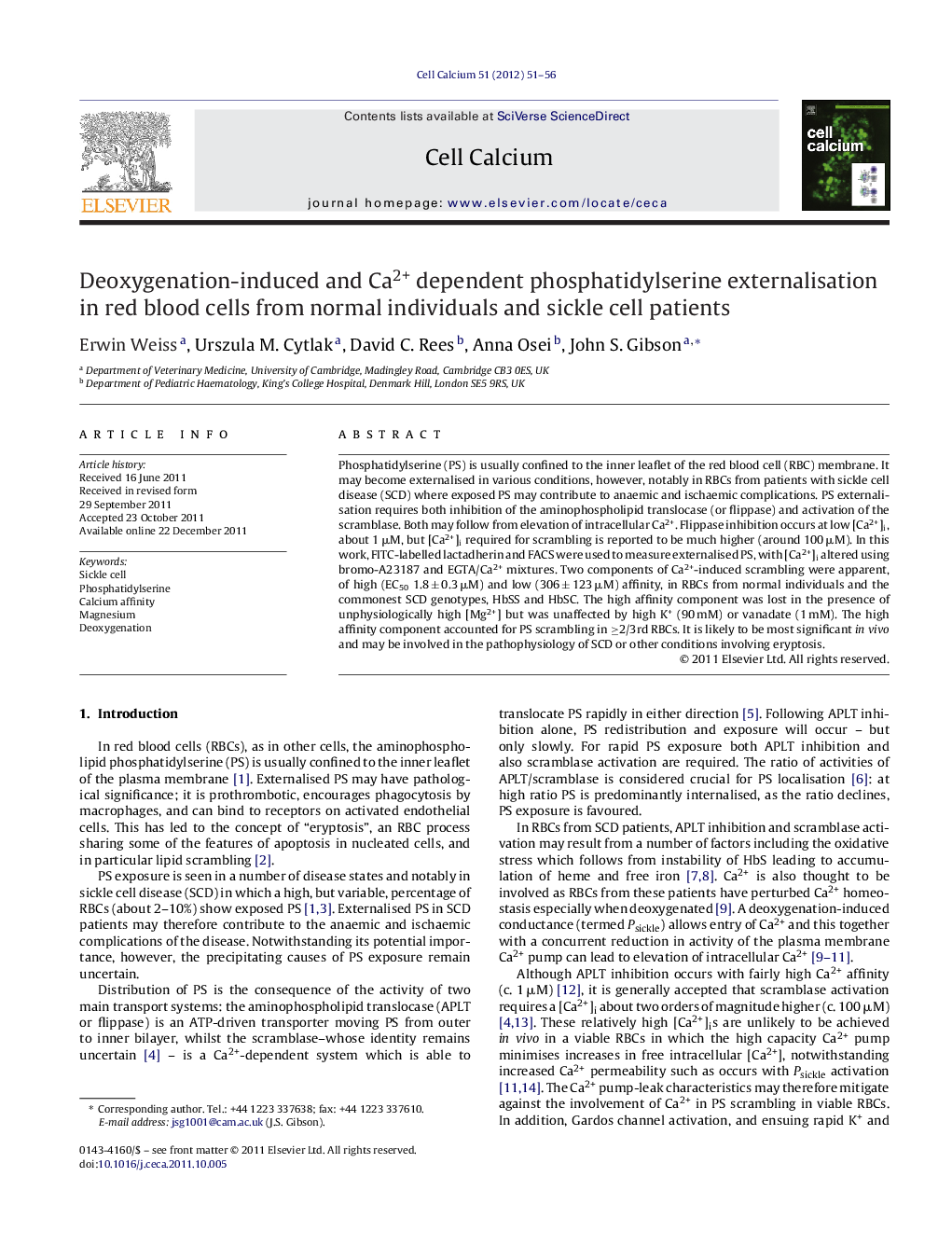| Article ID | Journal | Published Year | Pages | File Type |
|---|---|---|---|---|
| 10926316 | Cell Calcium | 2012 | 6 Pages |
Abstract
Phosphatidylserine (PS) is usually confined to the inner leaflet of the red blood cell (RBC) membrane. It may become externalised in various conditions, however, notably in RBCs from patients with sickle cell disease (SCD) where exposed PS may contribute to anaemic and ischaemic complications. PS externalisation requires both inhibition of the aminophospholipid translocase (or flippase) and activation of the scramblase. Both may follow from elevation of intracellular Ca2+. Flippase inhibition occurs at low [Ca2+]i, about 1 μM, but [Ca2+]i required for scrambling is reported to be much higher (around 100 μM). In this work, FITC-labelled lactadherin and FACS were used to measure externalised PS, with [Ca2+]i altered using bromo-A23187 and EGTA/Ca2+ mixtures. Two components of Ca2+-induced scrambling were apparent, of high (EC50 1.8 ± 0.3 μM) and low (306 ± 123 μM) affinity, in RBCs from normal individuals and the commonest SCD genotypes, HbSS and HbSC. The high affinity component was lost in the presence of unphysiologically high [Mg2+] but was unaffected by high K+ (90 mM) or vanadate (1 mM). The high affinity component accounted for PS scrambling in â¥2/3rd RBCs. It is likely to be most significant in vivo and may be involved in the pathophysiology of SCD or other conditions involving eryptosis.
Related Topics
Life Sciences
Biochemistry, Genetics and Molecular Biology
Cell Biology
Authors
Erwin Weiss, Urszula M. Cytlak, David C. Rees, Anna Osei, John S. Gibson,
